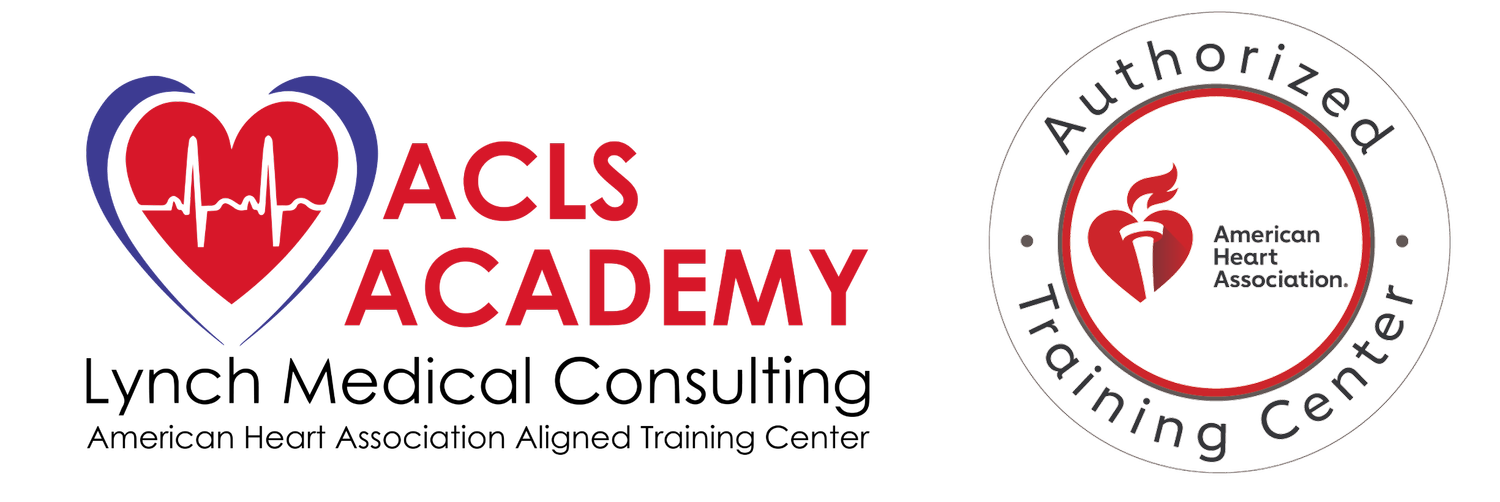Strokes are one of the most common types of medical emergencies, commonly occurring in older adults. It’s likely that you personally know someone or know of someone that has suffered a stroke but what exactly is it? Today, our team at ACLS Academy is breaking down exactly what a stroke is, the different types, symptoms of a stroke, and the risk factors.
What is a Stroke?
A stroke happens when blood flow to a section of the brain is cut off and the brain cells are deprived of oxygen and start to die. When brain cells start dying off, the functions of that part of the brain can no longer perform. This causes loss of muscle control, memory, and speech.
Every stroke is different so the symptoms and how a person is affected can differ from person to person depending on where the stroke is in the brain.
The Different Types of Strokes
There are two types of strokes: Hemorrhagic and Ischemic.
Hemorrhagic Stroke
Hemorrhagic strokes make up about 15% of strokes according to the National Stroke Association. This type of stroke happens when blood spills or leaks into the brain from a brain aneurysm burst or a weakened blood vessel leak. This type of stroke can happen intracerebral and subarachnoid.
Intracerebral Hemorrhage
This type of bleeding occurs when a blood vessel bursts and leaks blood into the surrounding brain tissue, causing brain cells to die and the affected area to no longer work properly.
Subarachnoid Hemorrhage
This type of bleeding occurs between the brain and the tissue and is often caused by an aneurysm burst. This typically happens in patients with arteriovenous malformation (AVM), bleeding disorders, brain injuries, and those taking blood thinners.
Ischemic Stroke
Ischemic strokes are the most common type of stroke, making up 87% of strokes. This type of stroke occurs when a blood vessel going to the brain is blocked by a blood clot, stopping the bleed vessel from delivering blood to the brain. This can happen in two ways - embolic and thrombotic.
Embolic Stroke
This happens when a blood clot or plaque forms in the body and travels to the brain and blocks blood vessels from getting through to their destination. This type of stroke is typically seen in people with atrial fibrillation.
Thrombotic Stroke
This type of stroke happens when a blood clot forms in one of the arteries that supply blood to the brain. This type of stroke is typically seen in people with high cholesterol levels and atherosclerosis.
Signs & Symptoms of a Stroke
Knowing the signs and symptoms of a stroke is crucial for ensuring a person gets the medical help they need immediately and makes a difference in treatment options and long-term effects.
Stroke symptoms to look out for:
Sudden numbness/weakness of the face, arm, and leg, especially on one side of the body
Sudden confusion, trouble speaking, or difficulty understanding
Sudden issues with sight
Sudden trouble walking, dizziness, coordination, or loss of balance
Sudden severe headache
Stroke Risk Factors
It is often believed that strokes cannot be prevented. While this is true for a lot of uncontrollable risks such as age, gender, race, ethnicity, and family history, there are several lifestyle and medical risk factors that can be managed to reduce stroke risk. These include:
Eat a healthy diet
150 minutes of moderate activity or 75 minutes of vigorous activity per week
Eliminate the use of tobacco products
Drinking alcohol in moderation
Take control of high blood pressure or high cholesterol by eating healthy and exercising

